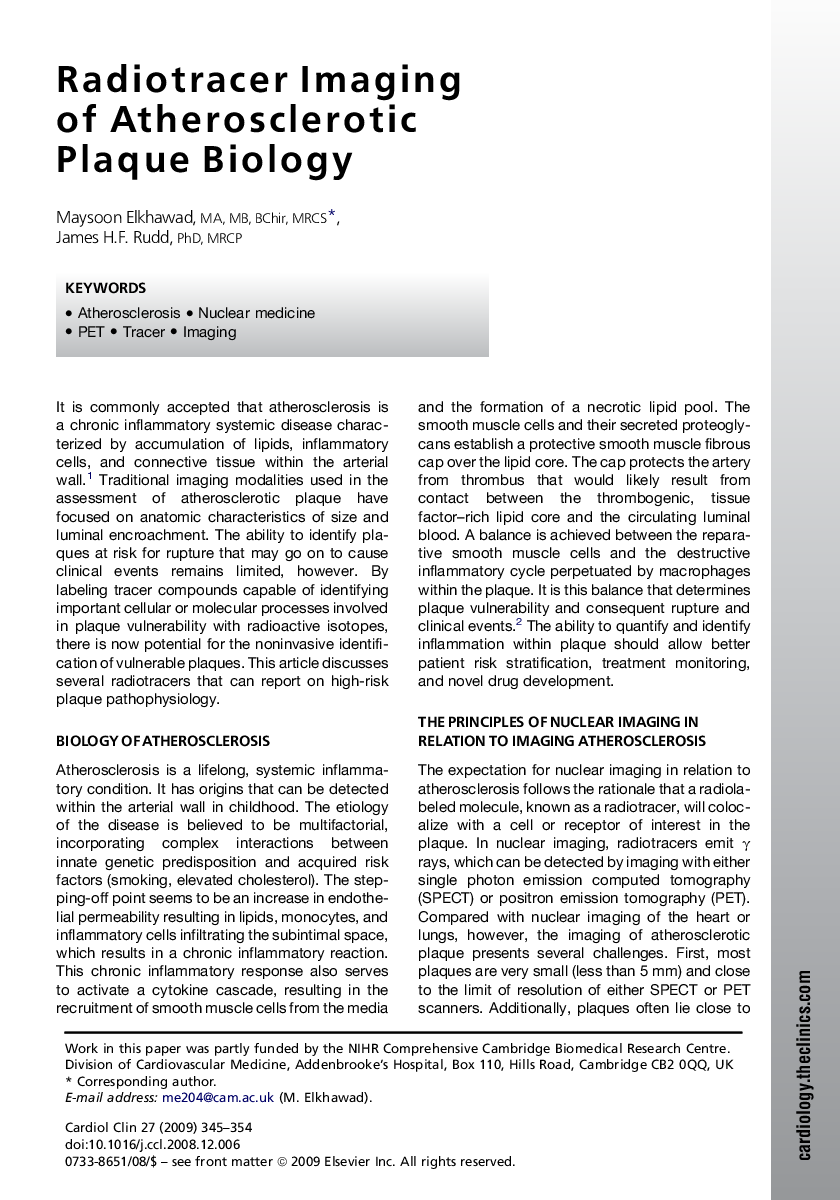| Article ID | Journal | Published Year | Pages | File Type |
|---|---|---|---|---|
| 2898320 | Cardiology Clinics | 2009 | 10 Pages |
Abstract
Traditional imaging modalities used in the assessment of atherosclerotic plaque have focused on anatomic characteristics of size, location and luminal encroachment. The ability to identify plaques that are at risk for rupture, and thus may go on to cause clinical events, remains limited, however. By labeling tracer compounds capable of identifying important cellular or molecular processes involved in plaque vulnerability with radioactive isotopes, there is now potential for the noninvasive identification of vulnerable plaques. This article discusses several radiotracers that can report on high-risk plaque pathophysiology.
Related Topics
Health Sciences
Medicine and Dentistry
Cardiology and Cardiovascular Medicine
Authors
Maysoon Elkhawad, James H.F. Rudd,
